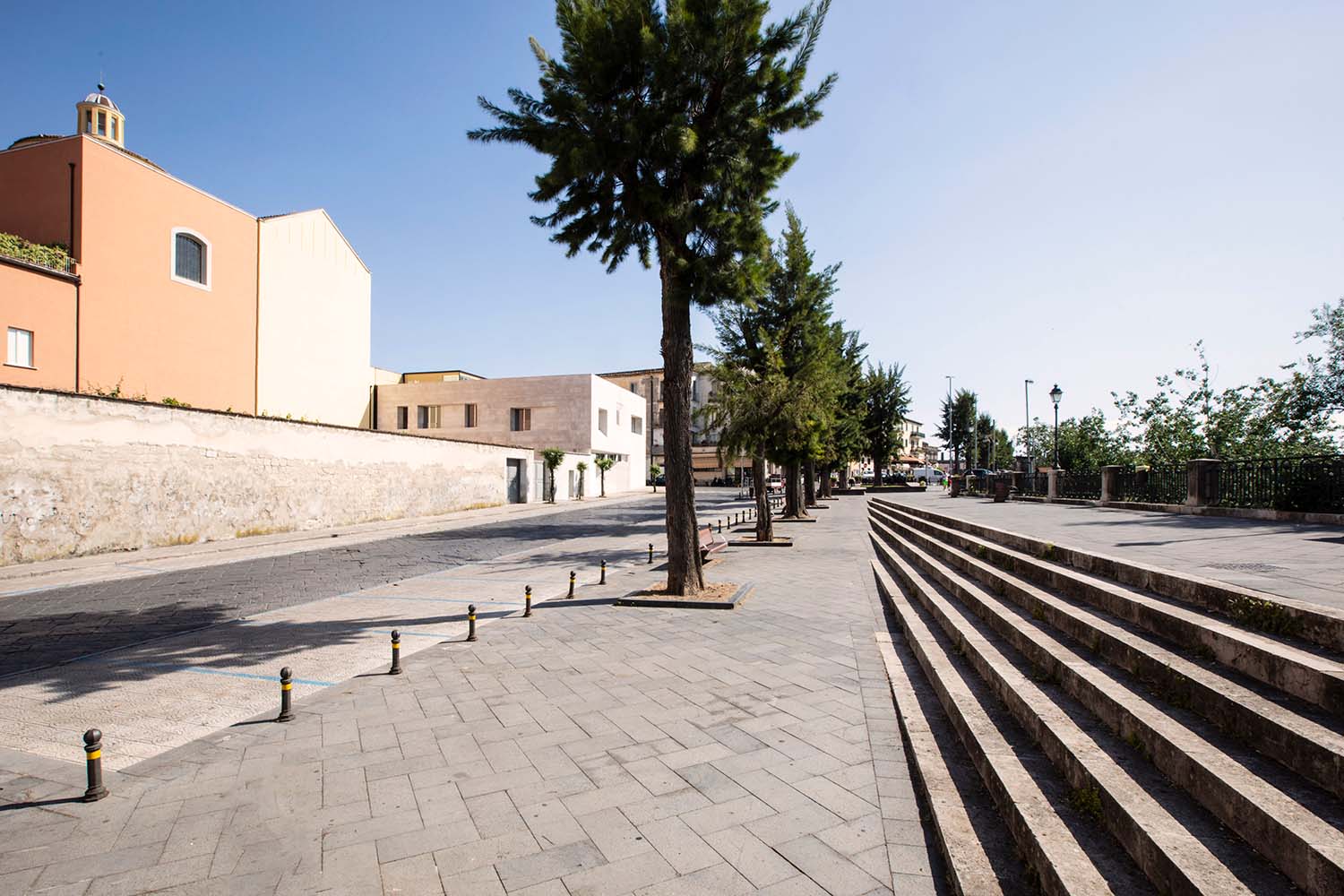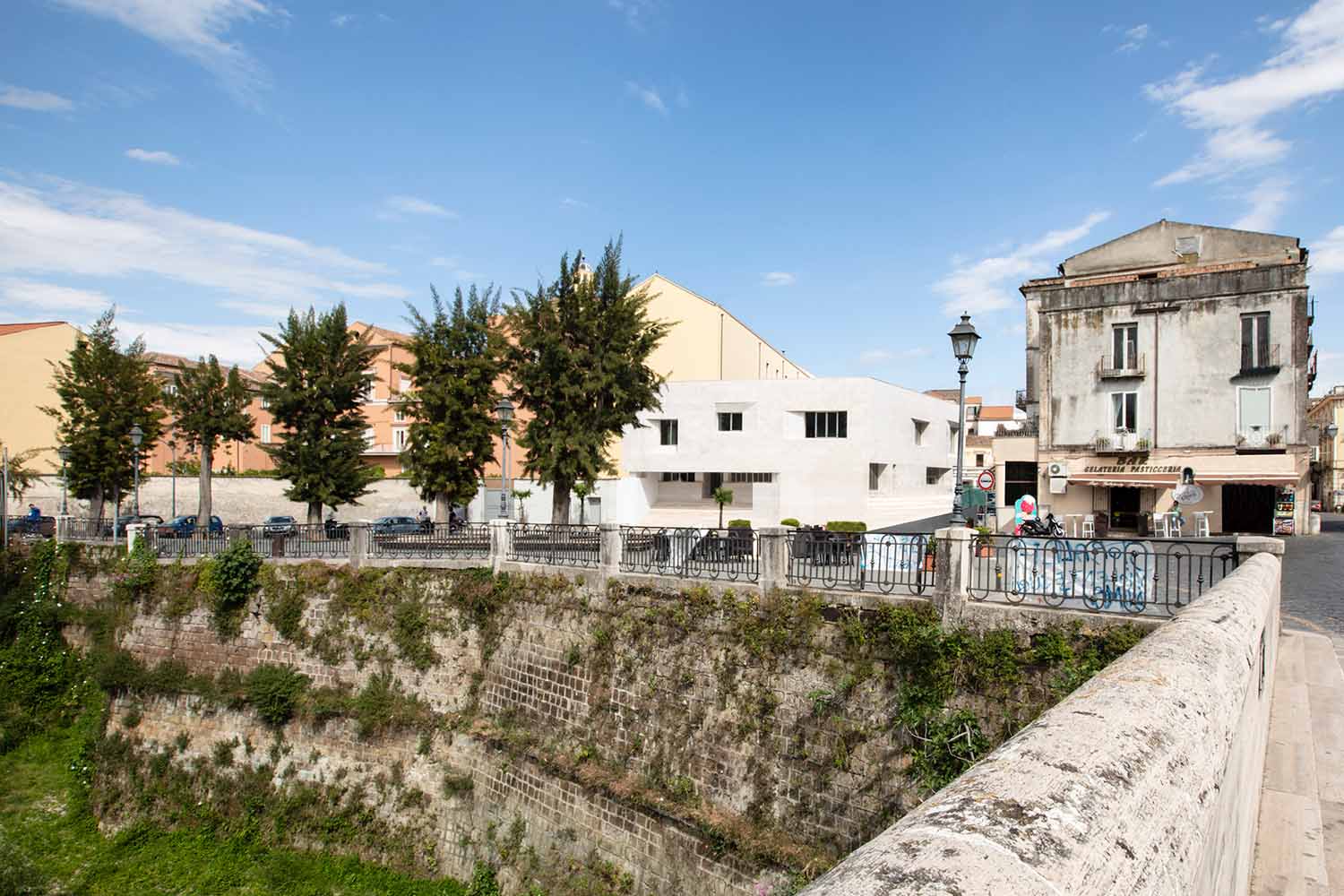Login
Registered users
A project that dialogues with the history of its city

Capua is a small town north of Naples, not far from Caserta. Founded by the Lombards on the site of the Roman city Casilinum, it’s always been an important crossroads by virtue of its position on the Volturno River and the ancient Via Appia and Via Casilina.
In 1943, bombing destroyed the Roman bridge over the Volturno as well as sections of the cathedral and surrounding parts of the town. Despite a competition to repurpose the destroyed area and a string of proposals over the years, including a retail building, the area between Piazza Etiopia and the river didn’t find its calling until the archiepiscopal curia of Capua recently commissioned a new education center as a natural extension of the post-war sacristy.

Designed by Massimiliano Rendina, an architect from Santa Maria Capua Vetere (the ancient Capua) and associate professor of Architectural Composition at the Departement of Engineering of the Campania Luigi Vanvitelli University, the compact volume of the new hall establishes a dialogue with the important history of the city, reinterpreting through a contemporary lens the deep fissures in the city’s ancient walls and its architectural eccentricities from the Middle Ages.
The building, with two aboveground floors and a trapezoidal plan, has street frontages to the south, west, and north, with one adjoining the religious complex to the east. The cladding is light-colored stone, with the tiles creating a sense of horizontal movement and a vibrant appearance.
Compact and with a pronounced materiality, the block of the building appears to have been conceived as a sculpture with sections cut away at the door and window openings. At the entrance, stairs and a diagonal wall break up the two-dimensionality of the façade, creating a hollow space that gives depth to the design while seemingly inviting you to step inside. The openings on the other street frontages have the same characteristics: with all apparently arranged irregularly and in different sizes, they interrupt the flatness of the walls with their angled, cutaway appearance.
>>> Discover the Church of Divine Providence in Lviv.

Inside, the basement and two aboveground floors have classrooms and spaces of different sizes, aimed at responding to the multiple needs of the parish. At street level, the irregularly shaped foyer leads to offices, three small rooms, and a larger one. Upstairs, there are another six rooms in different sizes. The basement, however, is entirely occupied by the parish hall.
Rendina’s design is unusual for a small Italian town like Capua, where the flow of urban stratification is frequently interrupted by suburbs built in the seventies. In this case, however, a part of the ancient city that for a long time had no clear future has a new purpose in a courageously contemporary form.
>>> Discover the Sanctuary of Senor de Tula.
















Location: Capua, Italy
Architect: Massimiliano Rendina (with arch. Vincenzo Rossetti, arch. Luca Branco, ing. Massimo Sapio, ing. Gaeatano Lo Sapio)
Client: Parrocchia Maria SS. Assunta in Cielo
Photography by Santo Eduardo Di Miceli, courtesy of the author